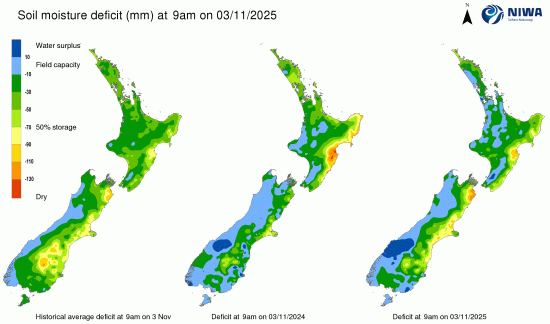Here's our summary of key economic events overnight that affect New Zealand, with news of a sudden jump in international crude oil prices as the US sanctioned the main Russian oil companies.
In the US, existing home sales in September rose to just over a 4 mln annual pace, slightly more than in August and +3.3% better than year-ago levels. But it was to levels less than markets expected (4.1 mln pace). The weakest regions were the South and the Midwest. But both coasts got good increases, especially in California.
Because the Chicago Fed's National Activity Index collates a range of data that includes from US Federal government sources, and those are shutdown, the NAI is not published this month.
However the October Kansas City Fed factory survey reported a strong rise in activity. But new export orders fell, and the average workweek shrank which was unexpected. Apparently some facilities are "doing more production with less people". There is a general worry about where new orders will come from.
In Canada, they said their September retail activity retreated in the month and only held up by car-buying activity. Canadians aren't travelling either, and in an unusual twist the tourism flow into Canada from the US is now greater than the other way. But their factory activity rose by a good amount in the month.
We should probably note that China is putting the final touches to its latest Five-Year Plan. These have been the catalyst for the country's economic rise, despite their dismissal in the West. Their state planning has brought them up to be the alternate world superpower. And China and the US will be meeting in Malaysia in a few days to see if they can iron out some knotty disagreements and pave the way for a Xi-Trump summit. It will likely happen because the Americans seem on the back-foot now, but startlingly blind to their growing weakness. And TACO.
Singapore reported September inflation of just +0.7% from a year ago, a pick-up from August's four year low.
Taiwan said its retail sales fell -2.2% in September from a year ago, reversing August's rise. They said public uncertainty levels are high and spending plans are conservative. But the same view isn't shared in their factory sector where industrial production was up +15% from a year ago, consistent to order information we reported yesterday and which is likely to drive output even higher in coming months.
The EU reported its September consumer sentiment survey results and this was little-changed, remaining quite negative although a bit less so than in prior months. In fact, it is now its least-negative since February.
Container freight rates rose +3% last week, largely on the China-to-EU trade. Overall they are now -45% lower than year-ago levels. Bulk cargo rates rose +8.5% over the past week and are now +40% higher than year-ago levels.
The UST 10yr yield is now at 3.99% and up +4 bps from this time yesterday. The key 2-10 yield curve is still at +52 bps. Their 1-5 curve is now at +2. And their 3 mth-10yr curve is only -1 bp inverted. The China 10 year bond rate is up +1 bp at 1.77%. The Australian 10 year bond yield starts today at 4.16%, up +4 bps from yesterday. The NZ Government 10 year bond rate starts today at just on 4.02%, up +3 bps.
Wall Street is firmer today, up +0.7% on the S&P500 regaining some of the prior day's drop. Overnight European markets were up +0.2% except London was up +0.7%. Yesterday, Tokyo ended its Thursday session down -1.4%. Hong Kong was up +0.7% while Shanghai gained +0.2%. Singapore was up +0.5%. The ASX200 ended its Thursday essentially unchanged. But the NZX50 rose back +0.5%.
The price of gold will start today back up sharply at US$4129/oz, a gain of US$81 from yesterday, a +2.0% firming. Silver has risen less, now at US$49/oz.
American oil prices are +US$3.50 higher at just under US$62/bbl, with the international Brent price now just on US$66/bbl.
The Kiwi dollar is at just on 57.5 USc, and again little-changed from yesterday. Against the Aussie we are down -20 bps at 88.3 AUc. Against the euro we are also unchanged at 49.5 euro cents. That all means our TWI-5 starts today at just under 62.1 and essentially unchanged.
The bitcoin price starts today at US$110,047 and up +1.5% from this time yesterday. Volatility over the past 24 hours has been modest at just over +/- 1.6%. (Trump has pardoned a major crypto fraudster.)
Daily exchange rates
Select chart tabs
The easiest place to stay up with event risk is by following our Economic Calendar here ».
3 Comments
The global economy cannot maintain - let alone grow - ex fossil energy.
And that is tapped-out rate-wise, with average depletion-rates over 5%. It cannot survive ex Russian supply. Simple as that. So there will be workarounds - China and India and smaller players will succumb to mounting internal pressure, and call US bluff.
Who will fold? Will fight?
Meantime record temperatures (wait for the Profile denial)
https://www.odt.co.nz/news/australia/three-states-hit-record-temps-aus-…
"SHANGHAI: China has identified a list of goals to guide its next Five-Year Plan until 2030, placing greater emphasis on technological self-reliance, domestic demand and national security - and, for the first time, incorporating defence capability into the country’s 2035 development blueprint."
https://www.channelnewsasia.com/east-asia/china-fourth-plenum-five-year…
4th para, “doing more production with less people.” Elements of Northcote Parker suggestible? His explanation that work expands itself to fill and occupy time and people available.


We welcome your comments below. If you are not already registered, please register to comment.
Remember we welcome robust, respectful and insightful debate. We don't welcome abusive or defamatory comments and will de-register those repeatedly making such comments. Our current comment policy is here.